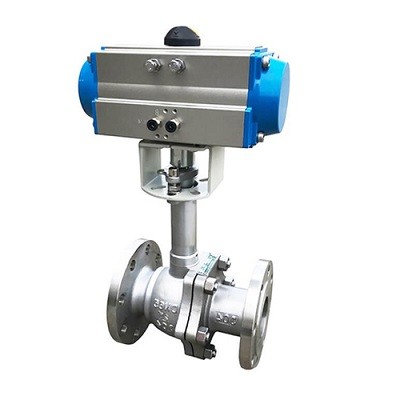Pneumatic Cryogenic Ball Valves: Enhancing Safety in Cryogenic Applications
Pneumatic cryogenic ball valves are revolutionizing safety protocols for handling liquid cryogenic mediums, including ethylene, liquid oxygen, liquid hydrogen, liquefied natural gas (LNG), and liquefied petroleum products. The ball valves, designed specifically for low-temperature applications, offer precise control over fluid flow, ensuring seamless transitions between liquid and gaseous phases. By incorporating pneumatic cryogenic ball valve into cryogenic systems, industries are witnessing a heightened level of safety and efficiency in managing these challenging materials. In this article, the features of this special ball valve for low temperature application will be mainly discussed.

Material Selection for Enhanced Safety and Reliability
In the development of ball valves tailored for liquefied natural gas (LNG), material selection stands out as a critical factor, ensuring the prevention of external or internal leakage in valve bodies and sealing surfaces. Comprehensive mechanical performance, strength, and rigidity are essential to meeting usage requirements and avoiding fractures that could lead to catastrophic LNG leaks and explosions.
Key Features of Pneumatic Cryogenic Ball Valve
1. Material Expertise for Extreme Conditions
Valve components designed for usage in temperatures below -100°C undergo deep cryogenic treatment, adhering to regulations to prevent low-temperature brittleness and volume changes due to material phase transitions.
2. Innovative Long-Neck Design
Pneumatic cryogenic ball valves feature a long-neck structure to maintain the working temperature of the packing above 0°C. This design prevents sealing performance degradation or failure due to excessively low operating temperatures and facilitates the application of thermal insulation materials around the valve to prevent energy loss.
3. Pressure Release Safeguards
Floating ball valves adopt an imported pressure-relief outlet sealing design, effectively preventing abnormal pressure build-up in the central chamber due to temperature variations. This design ensures the safe operation of both the valve and the pipeline.
4. Advanced Actuation Mechanisms
Valves feature dual-layer stem packing, counter-pressure disc diaphragms, and versatile GTD or ATD pneumatic actuators, available in both double-acting and spring-return configurations. Large-diameter valves use AW series pneumatic actuators with pull-fork transmission for substantial torque output.
In key industries like petrochemicals, air separation, and natural gas, pneumatic cryogenic ball valves are instrumental. The quality of these valves significantly impacts production safety, economic feasibility, and overall sustainability. These advancements underscore a commitment to safety, efficiency, and environmental responsibility in critical industrial processes.

Material Selection for Enhanced Safety and Reliability
In the development of ball valves tailored for liquefied natural gas (LNG), material selection stands out as a critical factor, ensuring the prevention of external or internal leakage in valve bodies and sealing surfaces. Comprehensive mechanical performance, strength, and rigidity are essential to meeting usage requirements and avoiding fractures that could lead to catastrophic LNG leaks and explosions.
Key Features of Pneumatic Cryogenic Ball Valve
1. Material Expertise for Extreme Conditions
Valve components designed for usage in temperatures below -100°C undergo deep cryogenic treatment, adhering to regulations to prevent low-temperature brittleness and volume changes due to material phase transitions.
2. Innovative Long-Neck Design
Pneumatic cryogenic ball valves feature a long-neck structure to maintain the working temperature of the packing above 0°C. This design prevents sealing performance degradation or failure due to excessively low operating temperatures and facilitates the application of thermal insulation materials around the valve to prevent energy loss.
3. Pressure Release Safeguards
Floating ball valves adopt an imported pressure-relief outlet sealing design, effectively preventing abnormal pressure build-up in the central chamber due to temperature variations. This design ensures the safe operation of both the valve and the pipeline.
4. Advanced Actuation Mechanisms
Valves feature dual-layer stem packing, counter-pressure disc diaphragms, and versatile GTD or ATD pneumatic actuators, available in both double-acting and spring-return configurations. Large-diameter valves use AW series pneumatic actuators with pull-fork transmission for substantial torque output.
In key industries like petrochemicals, air separation, and natural gas, pneumatic cryogenic ball valves are instrumental. The quality of these valves significantly impacts production safety, economic feasibility, and overall sustainability. These advancements underscore a commitment to safety, efficiency, and environmental responsibility in critical industrial processes.

